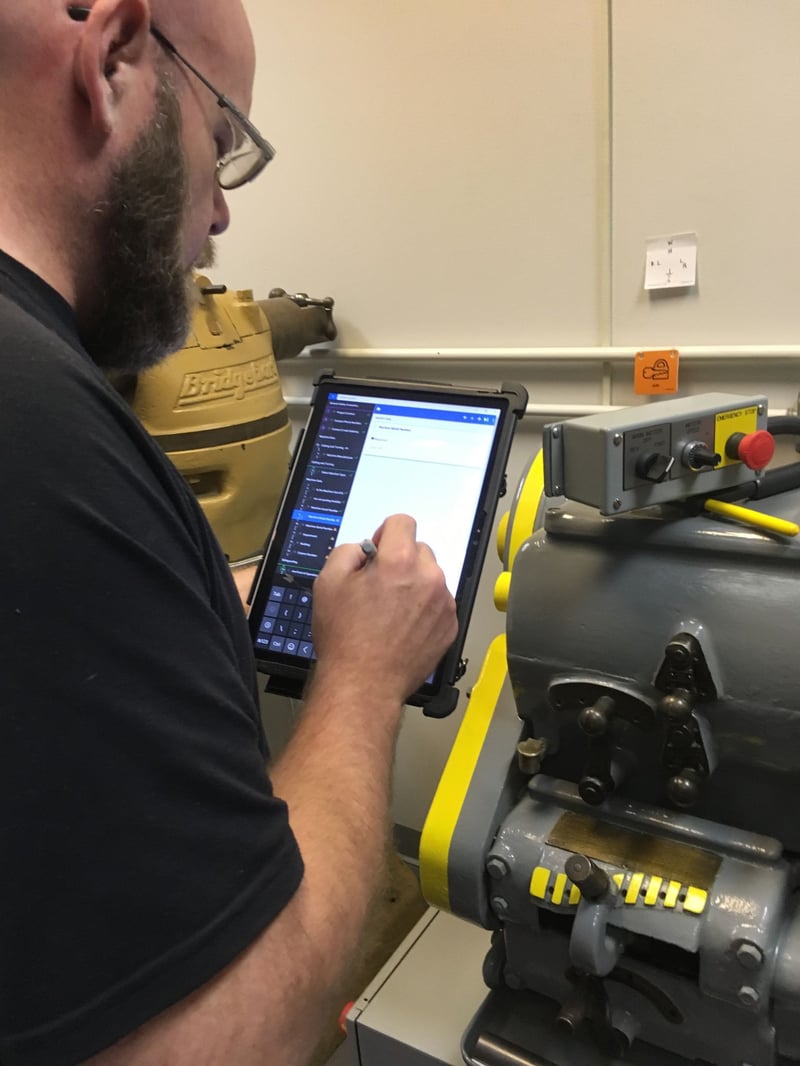 Rockford Systems has introduced a Machine Safeguarding Annual Verification Audit to confirm that safeguarded equipment is being used as designed and intended in dangerous environments. It ensures that a company is in compliance with OSHA and ANSI B11.19 standards, as well as meeting any internal safety policies. Afterwards, a detailed report is issued highlighting deficiencies along with high-level recommendations for corrective actions to bring deficient equipment back into compliance.
Rockford Systems has introduced a Machine Safeguarding Annual Verification Audit to confirm that safeguarded equipment is being used as designed and intended in dangerous environments. It ensures that a company is in compliance with OSHA and ANSI B11.19 standards, as well as meeting any internal safety policies. Afterwards, a detailed report is issued highlighting deficiencies along with high-level recommendations for corrective actions to bring deficient equipment back into compliance. Rockford Systems introduces annual Machine Safeguarding Audit Service
It is a common misconception that once machine safeguarding equipment has been installed onto industrial machinery, no further work is required for the safety of the employees operating it, as long as the machine was in compliance with OSHA regulation and recognized industry standards. The consequences of this misunderstanding have been countless injuries, and hundreds of thousands of dollars in fines, due to misused or unused machine guards, devices, and controls.
To address those challenges and complement its broad offering of machine safeguarding products, services, and solutions, Rockford Systems, LLC has introduced its Machine Safeguarding Annual Verification Audit. This annual audit service is designed to verify that safeguarded equipment is being used as designed and intended to protect employees working in dangerous environments. Moreover, it ensures that a company’s capital investment in providing a safe working environment is sustained and continues to be in compliance with OSHA regulation and ANSI B11.19 standards, as well as meeting any internal safety policies that a company may have established.
“Machine Safeguarding Initiatives require significant investment in capital and outside expertise,” said Matt Brenner, Vice President and General Manager of Rockford Systems, LLC. “If not sustained over time, the original capital investment is devalued. More importantly, risk increases. Employees are less safe and the probability and associated costs of a significant workplace injury escalate. Many companies don’t have the internal resources or expertise to audit and implement corrective actions for unsafe or non-compliant conditions in real-time.”
Visual & Function Testing
An annual audit will verify that installed safeguarding equipment continues to be used, and operated, as intended. The primary evaluation criteria for the audit are visual inspection and function testing of safeguarding, controls, disconnects, motor starters, and properly applied mechanical power transmission apparatus covers. Once an audit is completed, Rockford Systems provides a detailed audit report highlighting deficiencies along with high-level recommendations for corrective actions to bring deficient equipment back into compliance.
More Comprehensive Analysis
This annual audit differs from Rockford’s turnkey Machine Safeguarding Assessment service. Brenner commented that “this more detailed assessment process provides a comprehensive analysis of safety and compliance issues along with recommendations for engineered solutions, products, and installation of equipment. The audit is performed after machine safeguarding upgrades to ensure the sustainability of machine safeguarding improvements.”
Cloud-Based Portal
To help customers consistently and cost-effectively manage their machine safeguarding programs, Rockford Systems leverages their cloud-based portal, MyRockCloud, which houses current and historical audit report data. MyRockCloud creates an electronic archive that permissioned users can access from any location at any time, yielding improved planning and budgeting efficiency for any size safeguarding program. In the event of an accident or OSHA inspection, evidence of a disciplined, well-organized machine safeguarding program will be readily available to present to investigators.
Evolving Standards
Annual audits assist companies in staying current with evolving standards. For example, the recently published ANSI B11.TR8 indicates that machine safeguarding equipment must be inspected regularly according to supplier’s recommendations that are, in most cases, annually. Furthermore, it requires that when a machine is modified or relocated, risk reduction measures must be re-evaluated, a service included with Rockford System’s annual audit service.
Over a twelve-month period, any number of changes can occur to a safeguarding program that heightens the potential for injuries. For instance, the safety equipment may be removed, bypassed or tampered with, or re-installed incorrectly during maintenance. Regular wear and tear will also lead to equipment becoming less effective, especially when not properly maintained.
According to Brenner, these types of events are unfortunately common. “I have recently been at several large manufacturing facilities where safety equipment installed as part of a large safeguarding initiative have been removed or disabled, creating unsafe working conditions. Annual audits by a qualified third party will help mitigate these safety issues in real-time.”









